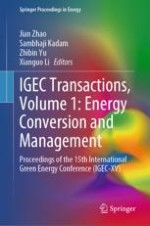2024 | OriginalPaper | Chapter
20. CFD Analysis of Combustion of Gasoline, Hydrogen, CNG and HCNG Blends in Internal Combustion Engine
Authors : Soumil Sahu, Soumay Srivastava, Akhil Ailaboina, Krishnakant Agrawal, Kaushik Saha
Published in: IGEC Transactions, Volume 1: Energy Conversion and Management
Publisher: Springer Nature Switzerland
Activate our intelligent search to find suitable subject content or patents.
Select sections of text to find matching patents with Artificial Intelligence. powered by
Select sections of text to find additional relevant content using AI-assisted search. powered by
